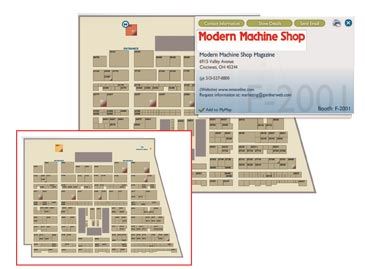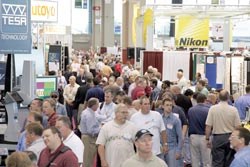Electrically Actuated Valve Gates: An Emerging Hot Runner Technology
Electrically actuated valve stems promise more control, cleaner actuation, closer pitch spacing, higher quality gates and reduced maintenance.
A new technology for actuating stems in valve gated hot runner systems is emerging as a progressive and effective solution. Traditionally, hot runner systems have used either pneumatic or hydraulic actuation to open and close valve gates. While both technologies are useful for specific applications, the new electrically actuated valve stems promise more control, cleaner actuation, closer pitch spacing, higher quality gates and reduced maintenance. This translates into a diverse set of benefits for molders.
Pneumatic Systems
Pneumatic actuated valve stem technology currently makes up over 80 percent of the market. It is the most widely used technology in the medical, technical and closures markets.
There are several reasons why pneumatic systems are so widely applied. The technology uses a medium that is readily available in molding facilities—compressed air—to move the valve system. The use of air makes it a relatively clean technology. Even the worst-case scenario of a leak does not warrant a huge clean up as in the case of a hydraulic oil leak. Pneumatic actuated systems are also easy to maintain and some require only one seal ring to operate. In addition, pneumatic technology offers simple system integration that everyone can use, yet still provides reliable actuation.
While pneumatic systems are fast, they can be limited in performance because air is typically available for up to only 100 psi. This limits the available stem force, especially in the case of small-pitch, individually-stem-driven systems with small piston diameters. Special attention needs to be given to the setup of air supply hoses and solenoid valves to ensure proper operation. If incorrectly assembled (e.g., air lines too long; solenoid mounted too far from hot runner), valve stems can open and close with slight delays between pistons—causing inconsistencies in cavity filling. Despite these limitations, pneumatic systems are a very effective technology for the majority of applications and continue to serve as a viable gating solution.
Hydraulic Systems
Hydraulic actuated valve gate systems make up less than 20 percent of the market. While they have a lower market presence in comparison to pneumatic systems, they still fulfill particular industry needs, specifically in automotive molding.
Hydraulic actuated valve gates are especially common in automotive or large part molding. Because large tools often require hydraulic mold actuation, hydraulic power packs are required to run these molds. This makes it easy for the molder to hook up the hot runner system to the same hydraulic setup. Since oil is not as compressible as air, hydraulic systems tend to react slightly faster to the open and close signal. Hydraulic systems typically run around 1000 psi, which translates into a higher valve stem actuation force. The downside is that if a leak occurs, either due to setup errors or wear of seals, the cleanup is considerably more labor intensive because of possible contamination to the machine, parts and the factory floor. Hydraulic systems also require more frequent maintenance to ensure proper operation. While the lower pressure of pneumatic systems is somewhat forgiving, in the case of a gate contamination (e.g., metal chips) or a nozzle shutdown, hydraulic actuation may induce damage to valve stems and gates because of the higher force exerted on the gate area.
Electric Systems
There is another option—an electrically actuated valve gate system. This system combines the strengths of both pneumatic and hydraulic hot runner technologies. While both traditional systems are highly effective technologies in their own right, for some customers an electric system represents the best of both worlds.
This technology uses an electrical servo motor to open and close valve stems with precision. It is a timely development because over the past several years electrical servo motor technology has become more affordable. Full electric injection molding machines are another driver for this technology. The electrical synchronized valve gate actuation system satisfies a growing demand to electrify the entire molding cell by providing several unique solutions for the molding of medical and other high-performance applications.
Electrical Drive Creates a Cleanroom Environment
Electrically actuated valve gates for hot runner systems are the cleanest of all actuation methods. Pneumatic air systems can potentially carry dust or debris, while hydraulic systems use oil that can leak. In comparison, electric power, through servo motor, bearings and cams, is converted into mechanical movement. This process does not move any dust, debris or liquid that can potentially contaminate a medical part or product. As an added bonus—because of the elimination of seals and O-rings—there is a reduced need for maintenance, resulting in lower operating costs and increased up-time.
Synchronized Stems Offer a Repeatable and Recordable Process
The valve stems are synchronized by a plate that couples them together. This synchronized stem movement eliminates the lag that is sometimes seen in pneumatic valve gates by ensuring that all stems are exactly in the same position during filling and closing. The servo motor and stem movement is controlled and assembled through an Altanium temperature and process controller (that is designed to provide the most accurate temperature control possible using distributed control and active reasoning technology). An integrated module provides a convenient setup screen that is easy to use. Each shot can be consistently documented via its electrical signal. This integrated setup allows molders who need to monitor or document key injection parameters to easily add stem positioning to existing parameters, such as injection time or cavity pressure. Plus, the integrated option reduces clutter around the injection molding machine.
Accessible Serviceability in the Machine Produces Increased Up-Time
Electrical actuated valve systems are as easy to set up as traditional systems. The absence of air or hydraulic lines reduces hose requirements around the machine. The stem actuation unit can be easily separated from the hot runner. This allows access to the valve stems and cam action components with the mold remaining in the press for both stem removal and decoupling. In addition, they can be set in a service position that permits the removal of the actuation frame from the hot runner. The systems also use a maintenance-free servo motor and have only one easily accessible lubrication point within the machine.
Valve Stem Decoupling Provides Greater Efficiency
In the case of plate actuated valve stem movement—where multiple stems are mounted into one plate (see Plate Versus Individual Actuation sidebar, page 33)—there is a safety feature for the coupling of the valve stem to the plate. Self decoupling is designed to have a predetermined break with a predetermined force that results in the voluntary decoupling of the stem from the plate. For example, if a heater on a nozzle is lost or a foreign object blocks the gate, the stem automatically decouples from the plate avoiding damage to the gate or stem.
Servo Motors Offer Increased Consistency with Less Margin for Error
The use of servo motors allows for the ability to precisely open and close every stem at exactly the same time, with absolutely no difference in valve stem opening and closing. This precision increases the level of consistency for both shot-to-shot and cavity-to-cavity filling. In addition to consistency, the servo motor’s torque can be adjusted. This allows the stem’s closing force to be fine-tuned between 150 to 300 pounds. In some applications, this ability for fine-tuning provides additional protection from gate damage.
Summary
Electrically actuated valve stem technology offers the best of both worlds—the force of hydraulics paired with the cleanliness of pneumatics. Not only is the system clean and fast, but the performance is easy to document. An integrated controller drives both the hot runner heaters and electrical servo motor. This integration will benefit manufacturers by reducing maintenance, improving efficiency and most importantly, lowering operating costs.
Pneumatic, hydraulic and electrical systems all have a specific niche in the manufacturing marketplace. While electrical synchronized valve stem actuation is an ideal technology for medical applications, the system can be applied to virtually any application. Especially in combination with plate actuation, electric systems offer close pitch [as low as 18 mm (0.7”)] direct gating capabilities. So when considering the future of electrical actuated valve stem technology, the application possibilities are wide open.
Related Content
6 Ways to Optimize High-Feed Milling
High-feed milling can significantly outweigh potential reliability challenges. Consider these six strategies in order to make high-feed milling successful for your business.
Read MoreMaintaining a Wire EDM Machine
To achieve the ultimate capability and level of productivity from your wire EDM on a consistent, repeatable and reliable basis, regular maintenance is a required task.
Read MoreLaser Welding Versus Micro Welding
The latest battle in finely detailed restoration/repair of mold materials.
Read MoreSolving Mold Alignment Problems with the Right Alignment Lock
Correct alignment lock selection can reduce maintenance costs and molding downtime, as well as increase part quality over the mold’s entire life.
Read MoreRead Next
How to Evaluate Hot Runner Nozzless
The way to choose the right hot runner nozzle is to evaluate the entire molding system first.
Read MoreAre You a Moldmaker Considering 3D Printing? Consider the 3D Printing Workshop at NPE2024
Presentations will cover 3D printing for mold tooling, material innovation, product development, bridge production and full-scale, high-volume additive manufacturing.
Read MoreReasons to Use Fiber Lasers for Mold Cleaning
Fiber lasers offer a simplicity, speed, control and portability, minimizing mold cleaning risks.
Read More













.jpg;maxWidth=300;quality=90)









